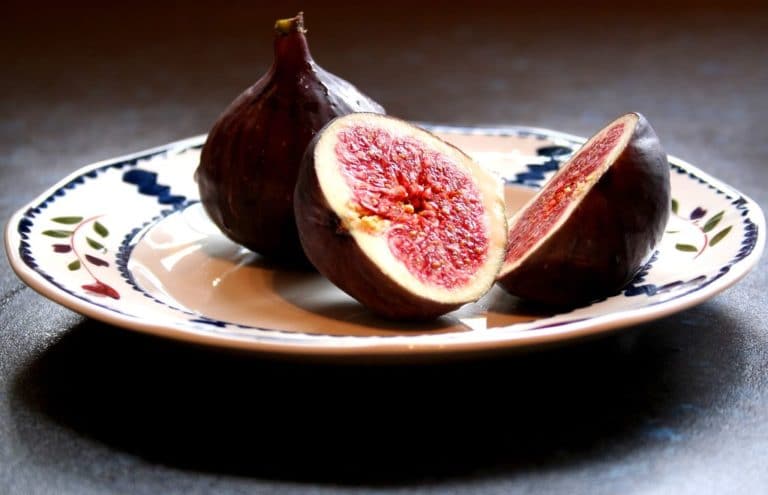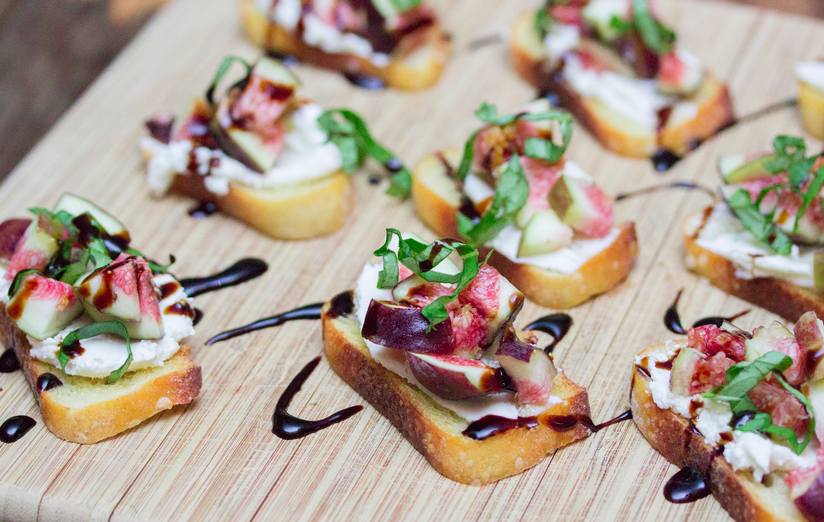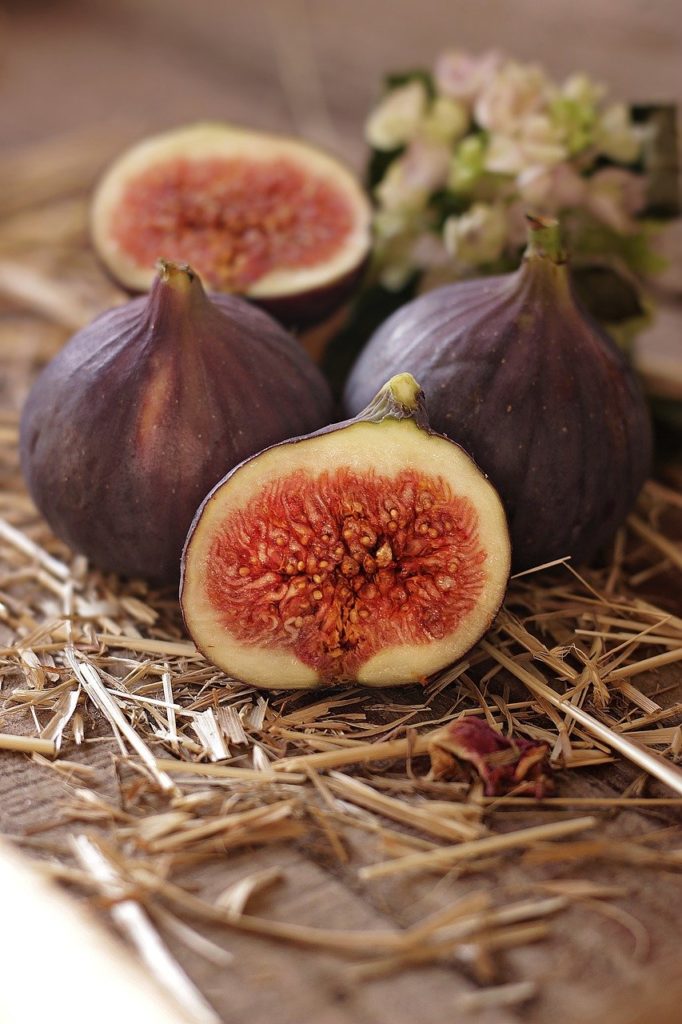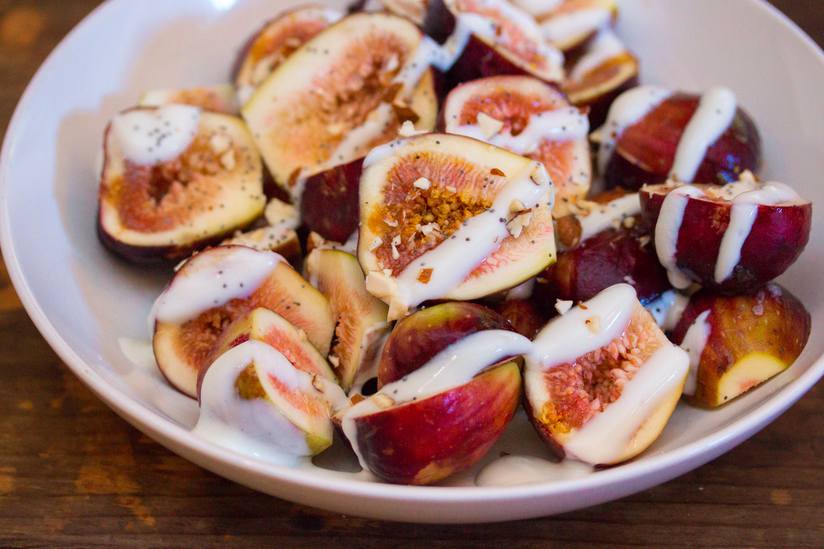
If you’re wondering how to eat a fig, you’ve come to the right address. I’m somewhat obsessed with figs, and am known to some of my friends and neighbors as Princess Fig, which obviously gives me the highest fig-titious certification that exists in the fruit universe.
The proper way to eat a fig is to simply reach up and pick one off a tree, twist off the top stem, split the fig gently in half, and enjoy the sweetness. When you’ve had your fill of straight-up figs, collect extras in a bucket and bring them home to make fig jam, fig bruschetta, orange fig and honey galette, or just slice them up and add them to your salad.

But how to spot a ripe fig? Nature has made that easy for you – if it comes off easily with a gentle snap, it’s ripe! But before you get to snapping, look for dark figs with color all around, as opposed to just on one side. Assuming you are picking the darker varieties, the fruit should be almost completely dark in color. Adriatic or kadota figs will be pale to dark green, but upon opening you will see the bright pink-red color and know they’re ready to be enjoyed.
If you absolutely must buy figs at a supermarket, open the container first and take a good whiff – they should smell sweet and fig-like. No scent likely means no taste, and that the figs were picked before they were ripe. Drips of sticky syrup on the outside are also a very good sign.

Supermarkets will have more of a selection of figs than your neighbor’s backyard, so here’s how to know what to buy. Brown turkey figs are one of the most popular figs (and the easiest to grow). They have brownish purple skin, and are a bit milder in flavor and sweetness than black mission figs. Brown turkey figs usually produce two crops during their somewhat long growing season. The first is the brea crop, produced in the spring from last season’s seedlings, and the second one in the fall is the main crop.

Black mission figs are the sweetest of figs, and will often split open near the stem from a sweetness explosion. The green varieties – Adriatic and Kadota – are less sweet, but deserving of the fig title no less with their delicate sweetness, beautiful bright pink interior, and lovely taste.
With all of my fig certification, I am unfortunately not blessed to own my own fig tree. Several years ago, dear friends and neighbors – keenly aware of my fig obsession – planted a beautiful baby fig tree in my yard. I watered that baby and would gaze out the window at its three little leaves, making grand plans for the future. Until the lawn guys accidentally ran over it with their mower. It never grew back, and I am destined to keep roaming the neighbor’s yards searching for ripe figs. The good news? When I bake with said figs, those neighbors get a taste of fresh-baked fig heaven.

